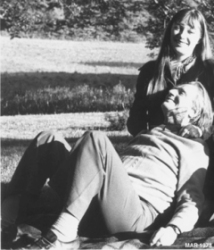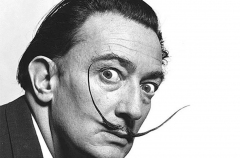
Robert Mallet-Stevens is an important figure in the development of Modernism in Europe, and especially France, in the inter-war decades of the 1920s and 30s. Born into a wealthy family of art collectors, he was exposed early in life to significant movements and stylists,including Vienna Secessionists Josef Hoffman and Gustav Klimt, who collaborated on the Palais Stocklet villa in Brussels for Mallet-Stevens' uncle. After studies at the Ecole Speciale d'Architecture from 1905-1910, RMS began to produce designs for interiors and furniture in an early modernist style which came to exhibit influences ranging from Charles Rennie MacIntosh to de Stilj, and even Frank Lloyd Wright. A contemporary and competitor of Le Corbusier, RSM grew his designs a similar architectural/mechanistic foundation that was geometric, generally devoid of extraneous decoration. He also formed pieces from modern materials that included steel tubing and sheet metal, often warmed and softened by natural elements such as wood, leather, and painted or lacquered finishes. A great believer in synthesis of forms and ideas, Mallet-Stevens' architectural career was prolific and wide-ranging. He designed factories, retail shops, a garage for Alfa-Romeo, a firehouse, apartments, private houses, even ships' cabins in which he was able to explore his particular interest in the relation of furniture to interiors spaces. A street in Paris was dedicated to Mallet-Stevens in the 1920s, as no less than six houses there are his design. He was invited to contribute to numerous public projects, including his Pavilione de Tourisme at the 1925 Expositione des Arts Decoratifs, and five distinct pavilions at the 1937 Exposition. Beyond design and architecture, he was a founder and first president of the Unione des Artistes Moderne (UAM) and a life-long writer and editor of design and cultural publications. RMS famously declared the death of Art Deco in a letter published shortly after the launch of the Normandie, considered the zenith of that style. He was also one of the first in his field to take an interest in the new art of film, and eventually contributed a masterpiece of film set design for Marcel L'Herbier's 1924 L'Inhumaine. His work also inspired Surrealist Man Ray's own film Les Mysteres du Chateau de De, based on RSM's famous Villa Noialles. Mallet-Stevens was famous in France and Europe during his life, but inexplicably ordered the total destruction of his own archives upon his death. This was accomplished, and his name lapsed into obscurity until 2005, when an exhibition at the Centre Pompidou of his models, drawings and designs revived interest in his varied influential career and works.




.png)